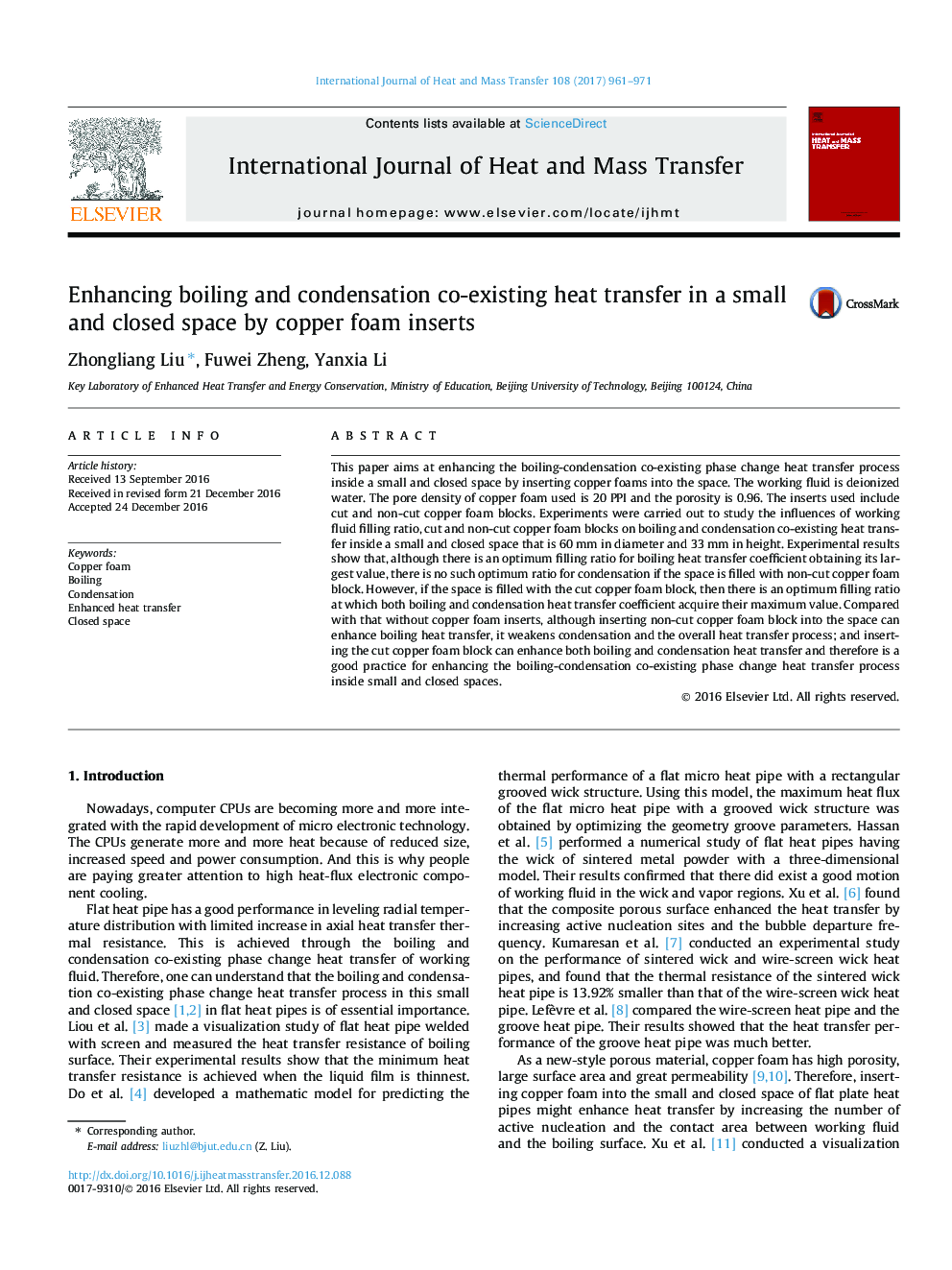| Article ID | Journal | Published Year | Pages | File Type |
|---|---|---|---|---|
| 4994333 | International Journal of Heat and Mass Transfer | 2017 | 11 Pages |
Abstract
This paper aims at enhancing the boiling-condensation co-existing phase change heat transfer process inside a small and closed space by inserting copper foams into the space. The working fluid is deionized water. The pore density of copper foam used is 20 PPI and the porosity is 0.96. The inserts used include cut and non-cut copper foam blocks. Experiments were carried out to study the influences of working fluid filling ratio, cut and non-cut copper foam blocks on boiling and condensation co-existing heat transfer inside a small and closed space that is 60Â mm in diameter and 33Â mm in height. Experimental results show that, although there is an optimum filling ratio for boiling heat transfer coefficient obtaining its largest value, there is no such optimum ratio for condensation if the space is filled with non-cut copper foam block. However, if the space is filled with the cut copper foam block, then there is an optimum filling ratio at which both boiling and condensation heat transfer coefficient acquire their maximum value. Compared with that without copper foam inserts, although inserting non-cut copper foam block into the space can enhance boiling heat transfer, it weakens condensation and the overall heat transfer process; and inserting the cut copper foam block can enhance both boiling and condensation heat transfer and therefore is a good practice for enhancing the boiling-condensation co-existing phase change heat transfer process inside small and closed spaces.
Related Topics
Physical Sciences and Engineering
Chemical Engineering
Fluid Flow and Transfer Processes
Authors
Zhongliang Liu, Fuwei Zheng, Yanxia Li,
